Mango trees provide kayakers with shade on the white sand beaches that line Lake Tanganyika. Endemic, brightly-coloured cichlids swim in the striking blue water - as do crocodiles and hippopotamus - and densely-forested mountains roll dramatically behind the lake. The Gombe Stream and Mahale Mountains national parks, home to Tanzania's thriving chimpanzee colonies, rise steeply out of the water of Lake Tanganyika, and form a lush green backdrop to the east.
One of Africa’s Great Lakes, Tanganyika is split between four countries - Burundi, the Democratic Republic of the Congo (DRC), Tanzania and Zambia.
At 410 miles (660km), Lake Tanganyika is the longest freshwater lake in the world. It’s also the second deepest freshwater lake in the world (behind only Lake Baikal in Siberia) with a maximum depth of 1,470m. If that's not enough, Tanganyika is one of only 20 ancient lakes more than one million years old. The central basin of Lake Tanganyika has been dated to nine to 13 million years old.
At 410 miles (660km), Lake Tanganyika is the longest freshwater lake in the world.
Not all the history is so old. The MV Liemba, a pre-WW1 German cargo ship, still ferries people along the eastern banks, in Tanzania. Watch the sunset over the lake from the ship, or from the cockpit of a kayak or a traditional dhow boat, and it’s easy to forget this is a lake, not an ocean - such is the magnitude of this 12,700 square mile body of water. So, where to start exploring? Here’s our guide to Lake Tanganyika - and seeing one of Africa’s Great Lakes in all its beauty.
What country is Lake Tanganyika In?
So where is Lake Tanganyika located on a map? The lake is in central-east Africa. As we mentioned, Lake Tanganyika is shared between four countries, with the largest section of the lake (46%) sitting within the boundaries of Tanzania, the second largest in DRC (40%), and the remainder in Burundi and Zambia.
The lake drains into the Lukuga River in DRC, which subsequently drains into the Congo River.
What to do on Lake Tanganyika?
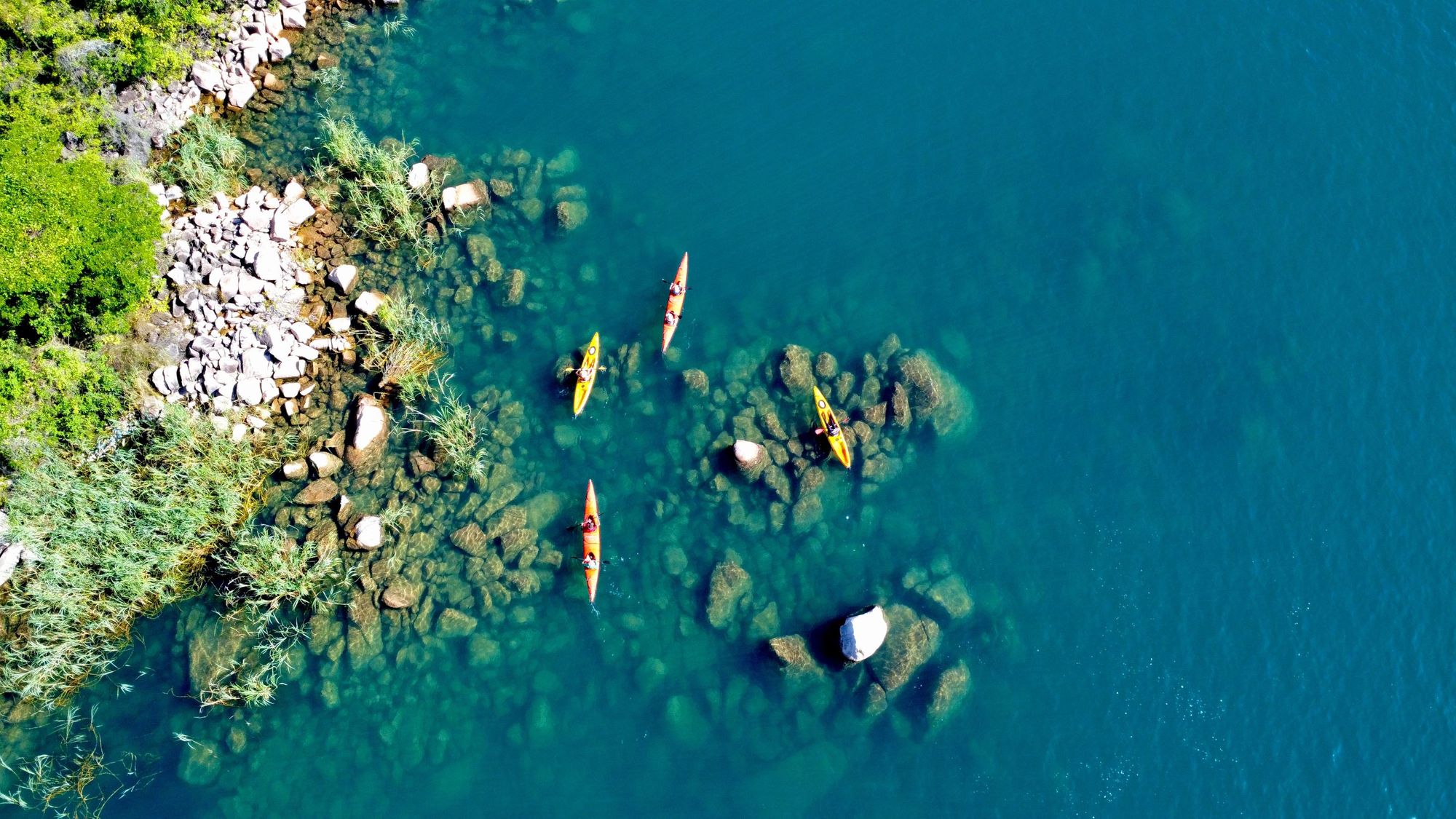
There are an array of ways to experience Lake Tanganyika, from getting out on sunset cruises or old warships to snorkelling and tracking chimpanzees in the forests which line the lake. The best things to do on Lake Tanganyika take in the beautiful biodiversity - and beauty of the lake.
Kayak the Coast to the Mahale Mountains
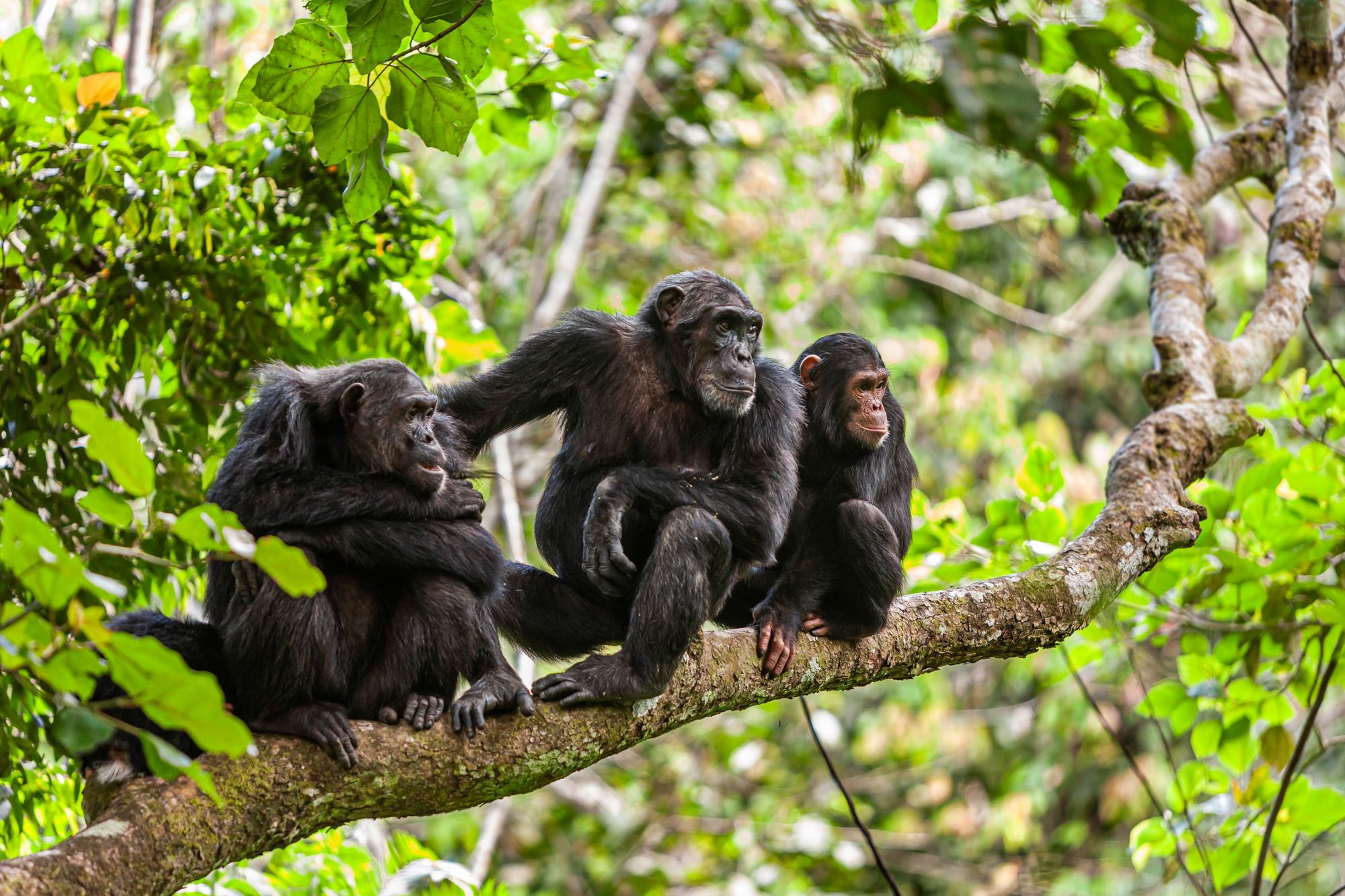
The Mahale Mountains National Park rise steeply out of Lake Tanganyika, and provides perhaps the most beautiful backdrop to the lake. The park’s remote location means it doesn’t get many visitors, and while arriving by air or boat is possible, the best way to visit (in our view, at least) is by kayaking down to Mahale from further up the Tanzanian coastline, on the east side of the lake.
The Mahale Mountains are part of the lesser-visited Western Safari Circuit - along with Katavi National Park and Gombe Stream National Park (of Jane Goodall fame) - and Mahale is one of the best places in the world to see wild chimpanzees. Kayak down the lake, with a guide showing you expect camp spots, then trek into the jungle to see the chimps when you arrive.
Of course, you can also visit chimps in Gombe Stream, which is also on the lake.
Snorkel and SCUBA dive on Lake Tanganyika
First things first - not all of Lake Tanganyika is bilharzia free, and hungry crocodiles (and territorial hippos) also inhabit the shores of the lake, so take care and seek out expert advice before diving, snorkelling or swimming in the Lake Tanganyika. Now, when you do find a safe spot to swim in Lake Tanganyika, you’re in for a treat. The huge array of endemic, brightly-coloured cichlids in the water (and lack of heavy tourism) means that there’s an abundance to see in the water.
The famous cichlids make up two-thirds of the fish in Lake Tanganyika, and 98% of them are unique to the lake. There are also endemic crabs, molluscs and crustaceans. You get Goliath tigerfish and Nile perch in the waters too - and the water is warm, clear and entirely free of salt.
Lake Shore lodge run diving outings on the lake - and filmed the video above.
Take a Trip on the MV Liemba
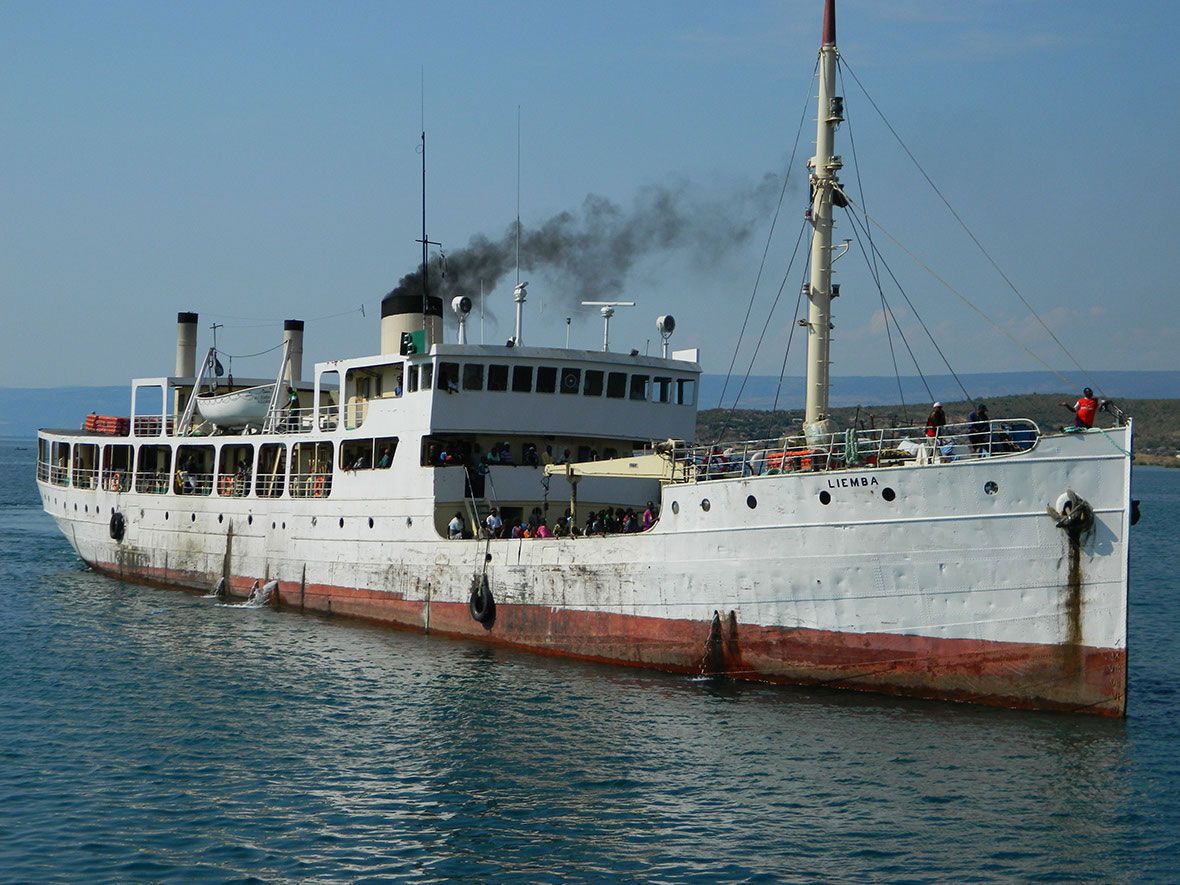
The MV Liemba is a German-built passenger and cargo ferry which is over 100 years old - and which still carries passengers today between Kigoma, Tanzania and Mpulungu, Zambia.
It was originally built in Papenburg, Germany in 1913, then was taken apart and shipped to Dar es Salaam, which at the time was in German East Africa, and rebuilt in Kigoma, on the banks of Lake Tanganyika. At that time, it had seven first class cabins and five second class cabins, as well as dining and smoking rooms. During WW1, the German Empire converted the boat into an auxiliary warship named SMS Goetzen and used it to control Tanganyika. Today, Liemba is the last German Imperial Navy boat still sailing, anywhere in the world.
Stops on the route of the MV Liemba include Lagosa (for the Mahale Mountains) and Karema (for Mpanda).
How to get to Lake Tanganyika?
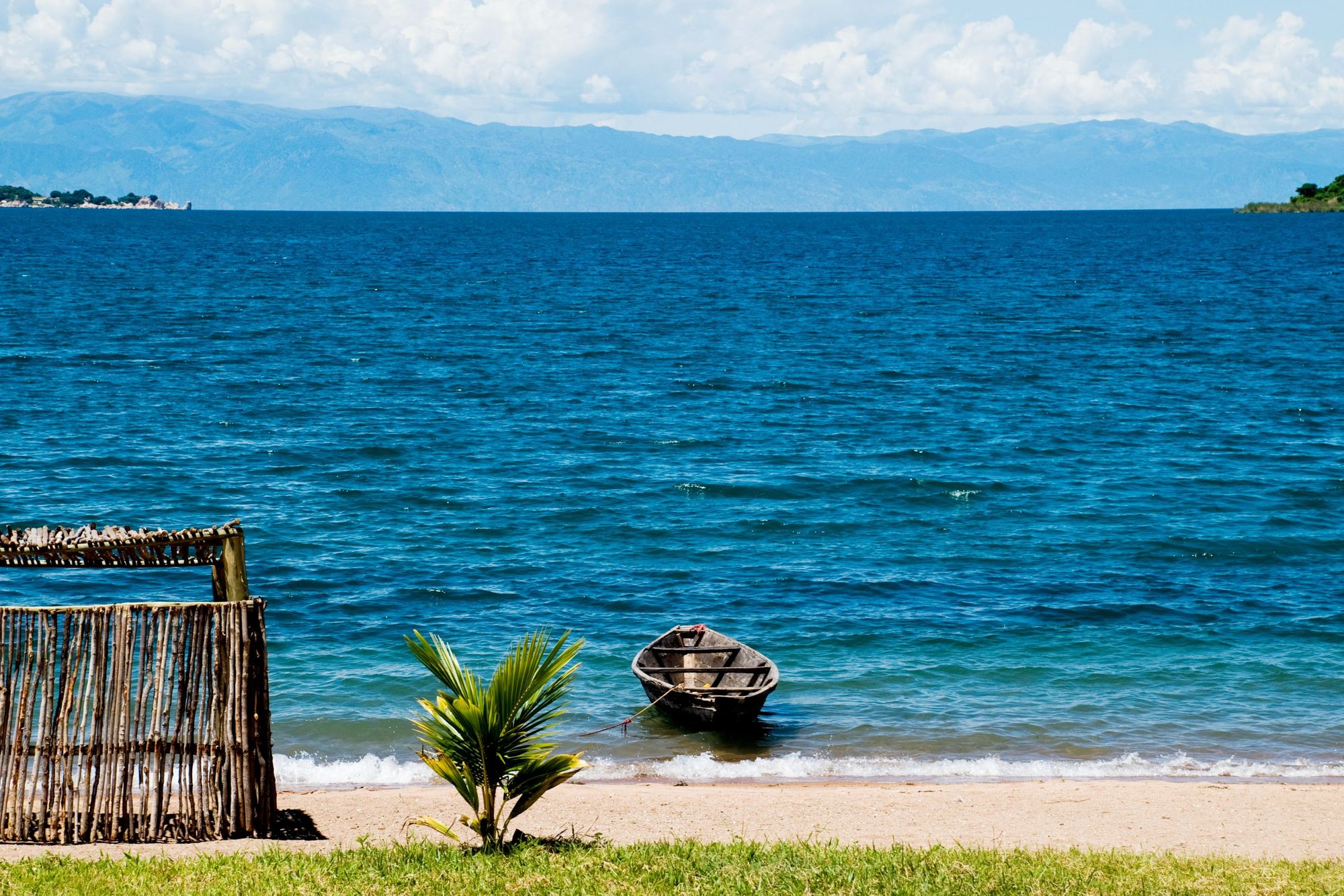
How you get to Lake Tanganyika depends on which country you’re coming to the lake from. Small settlements are dotted around the lake, but here we’ll look at some of the (slightly) larger hotspots. To stay safe and headed in the right direction, we strongly recommend getting an expert guide who knows the area.
Lake Tanganyika, Tanzania
Kigoma is the only Tanzanian city on Lake Tanganyika (though there are other settlements). It's on the northeastern shores, in Tanzania, and is the capital of the wider Kigoma Region. Road connections to Kigoma are poor, with only a gravel road connecting it to the national road network. But there are flights from Bujumbura and Tanzania's capital Das es Salaam, and you can also connect to Kigoma via the Port of Dar es Saalam by railway - via Tabora and Dodoma.
Another way to reach the lake is to fly to Mpanda, then drive through Katavi National Park, and the Lwafe Game and Forest Reserve, down to Lake Tanganyika.
Lake Tanganyika, Democratic Republic of Congo
In the Democratic Republic of the Congo, several towns sit off the west coast of Lake Tanganyika. Uvira is on the northernmost tip of the lake and is connected by road to the major city of Bukavu, capital of the South Kivu Province.
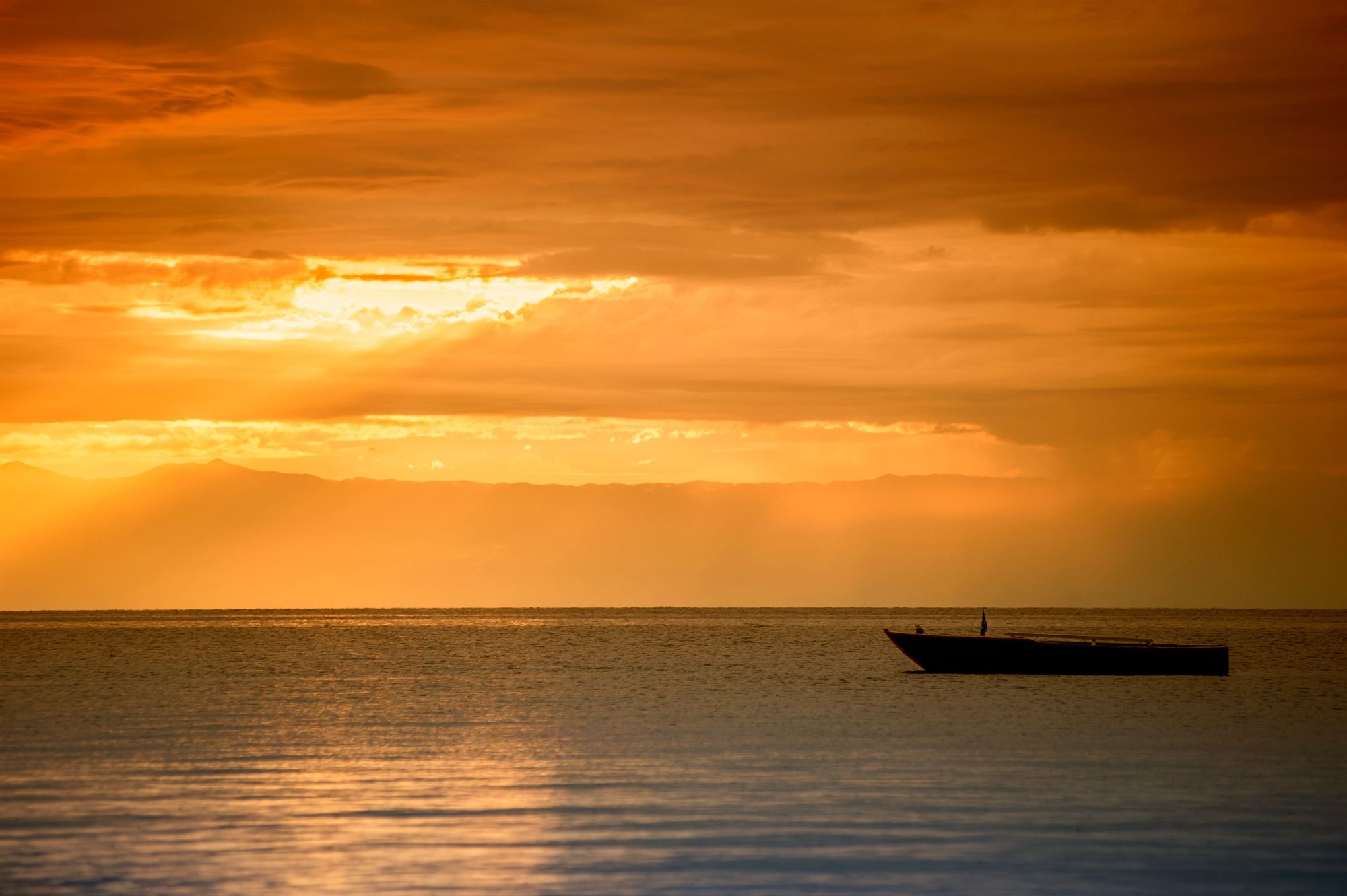
Travelling down the lake, you'll find the city of Baraka, which was only given that city status in 2010. Che Guevara briefly lived in this town in days past, and a small bay is named after him nearby. Further south, Kalemie is a town of around 140,000 people - with Kalemie Airport bringing people in from elsewhere in DRC, and numerous railway lines pass through Kalemie. A new railway network connecting Bukavu and Kalemie, via Baraka, is being discussed.
The much smaller town of Moba is further south yet, and is linked to Kalemie by boat services. There are no paved roads in Moba, or indeed, within hundreds of kilometres of the town.
Lake Tanganyika, Zambia
In Zambia, Mpulungu is the town on the southern tip of Lake Tanganyika from which the MV Liemba sets sail. The old fishing port sits at the end of the Great North Road (which runs from the capital of Lusaka to the border with Tanzania, via Kabwe, Kapiri, Mposhi, Serenje, Mpika, Isoka and Nakonde). It’s a long drive north from Lusaka, with the only air option being to charter a flight to Nsumbu.
Lake Tanganyika, Burundi
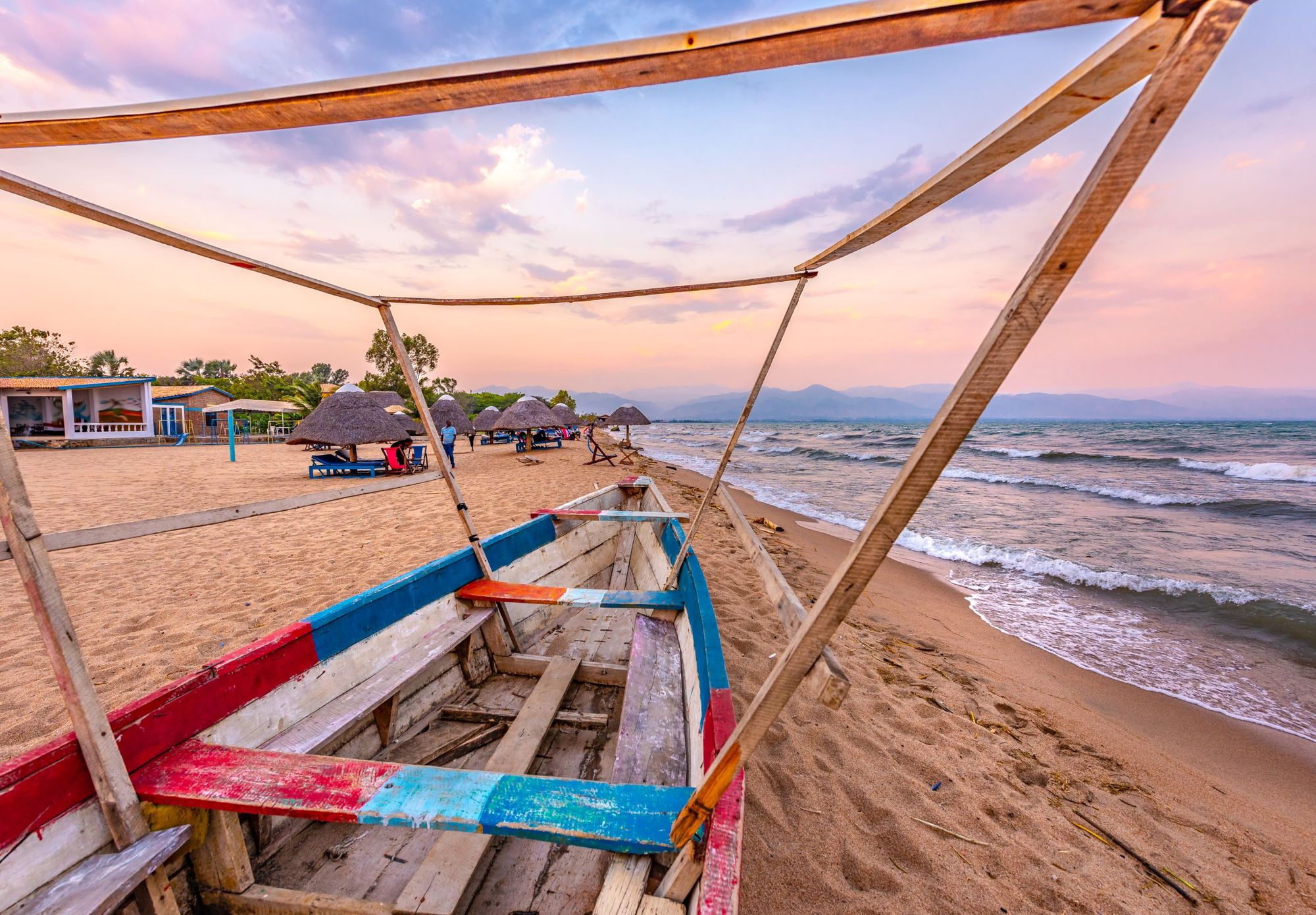
In Burundi, the country's capital, Bujumbura is actually on Lake Tanganyika - so there are easily accessible boat safaris, cruises and fishing trips, as well as tourist beaches and canoes to hire.
It’s worth mentioning for all of the above that digital maps can be unreliable around Lake Tanganyika. If in doubt, get a guide and travel with a local expert.
Inspired? Check out our Adventures in Africa!

